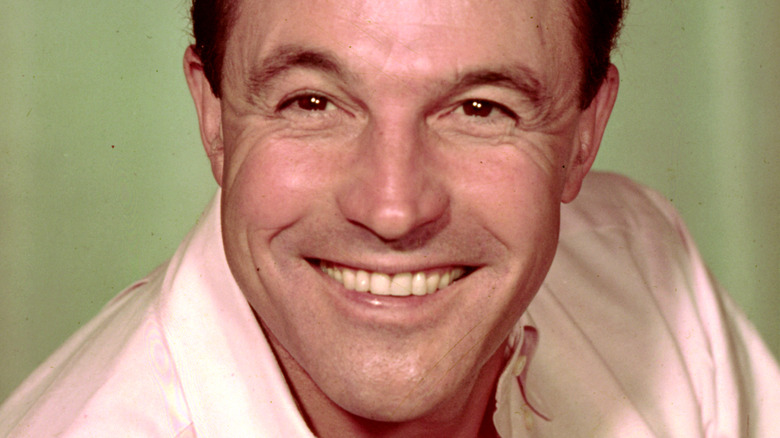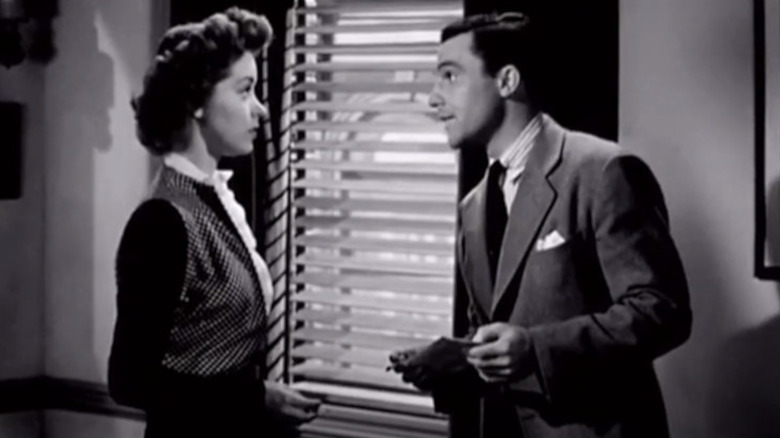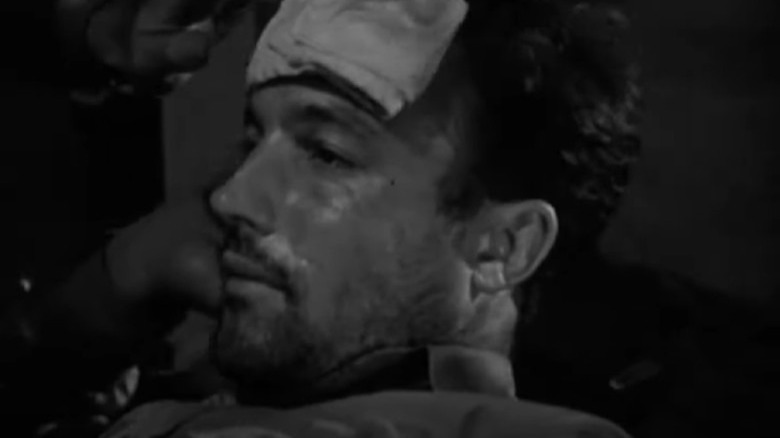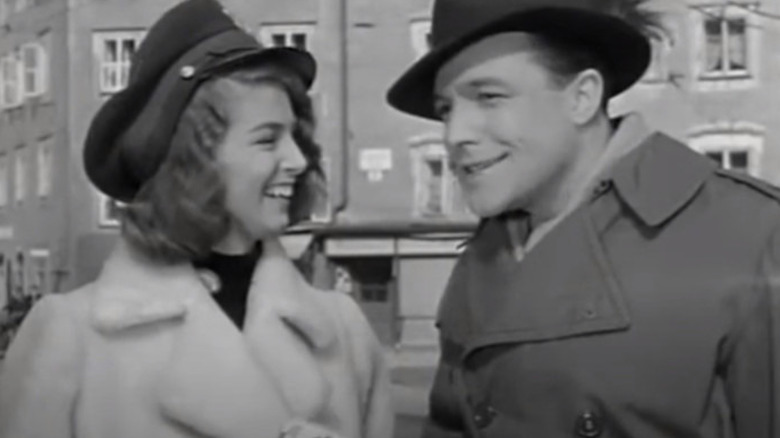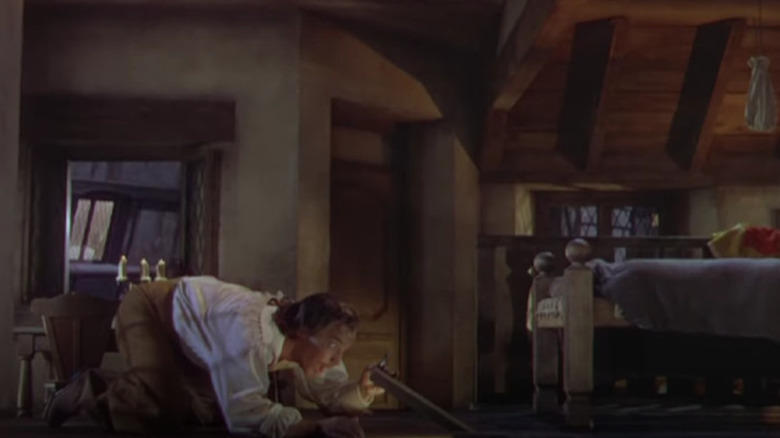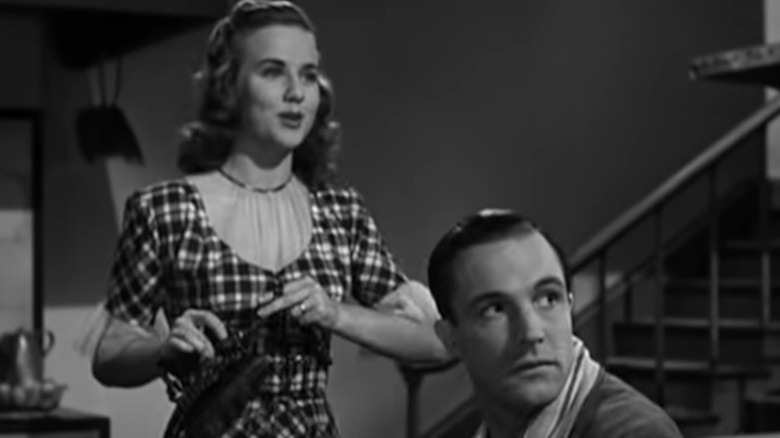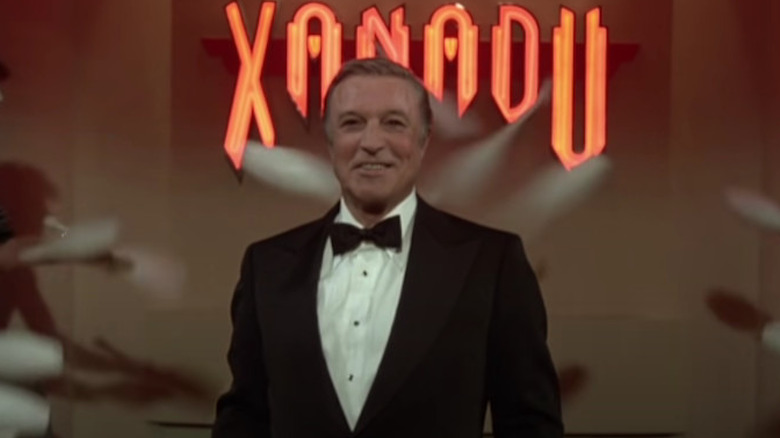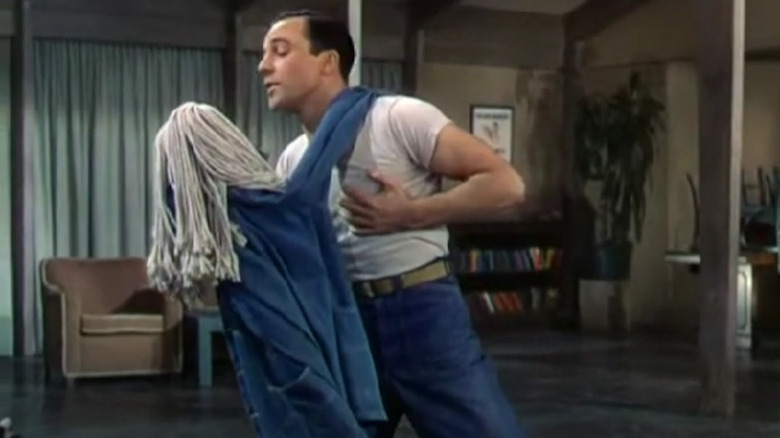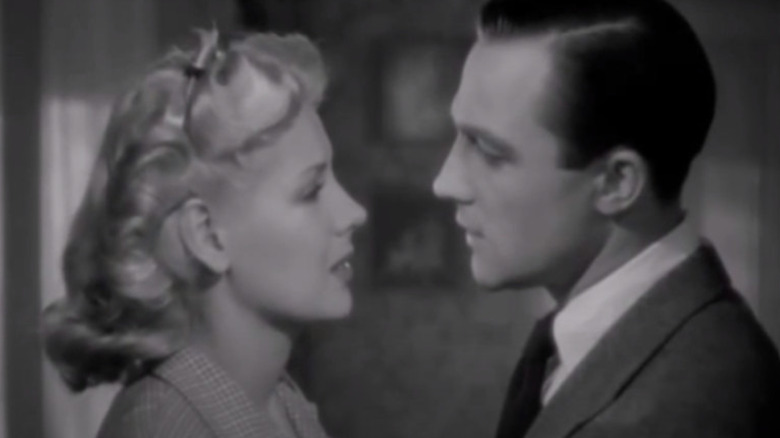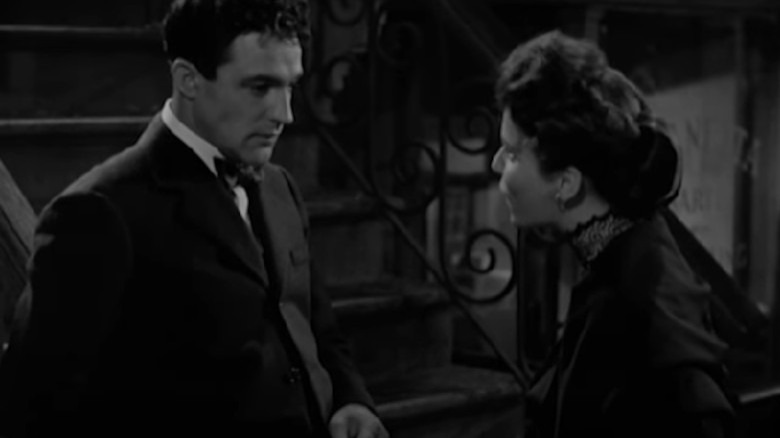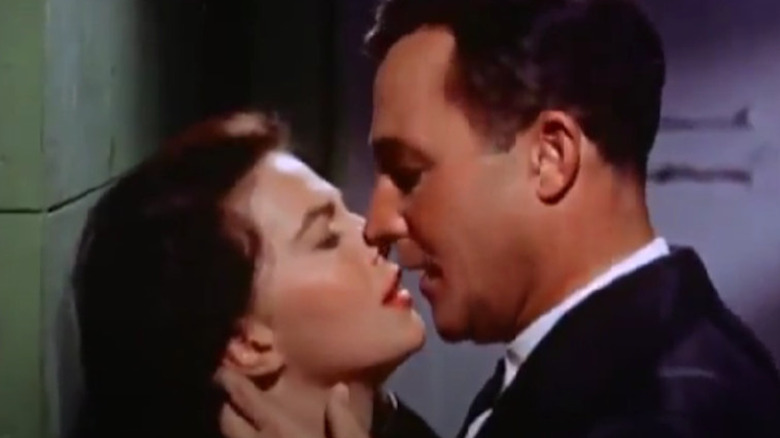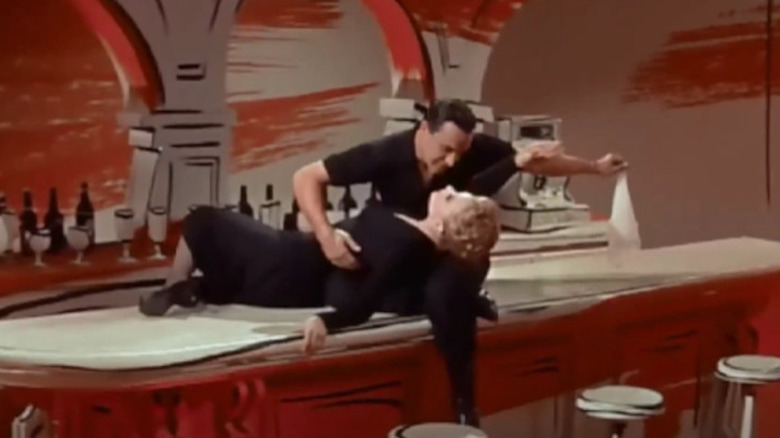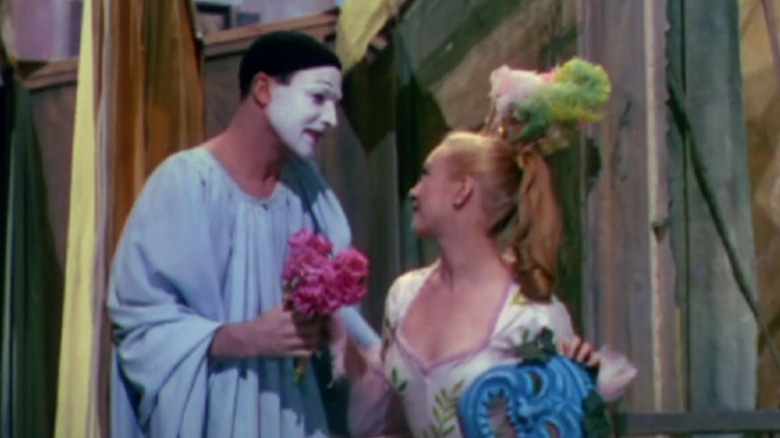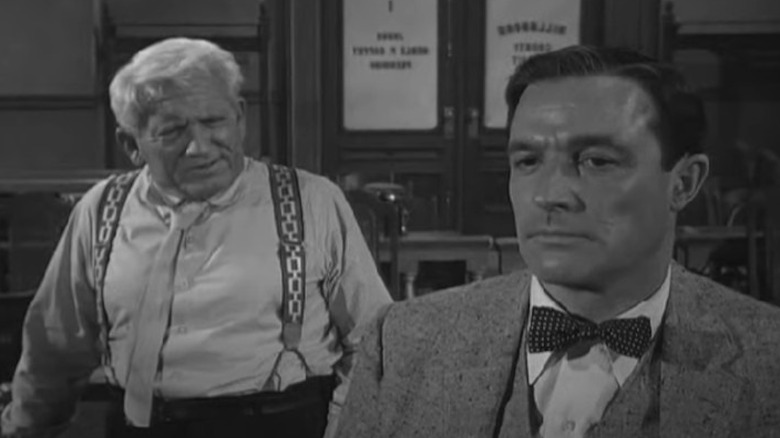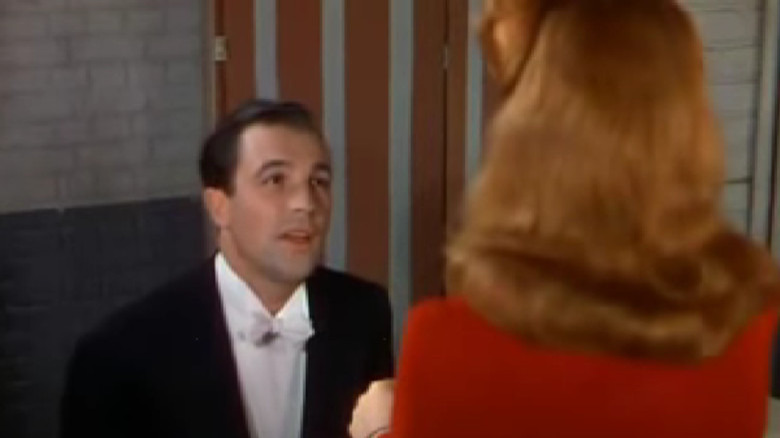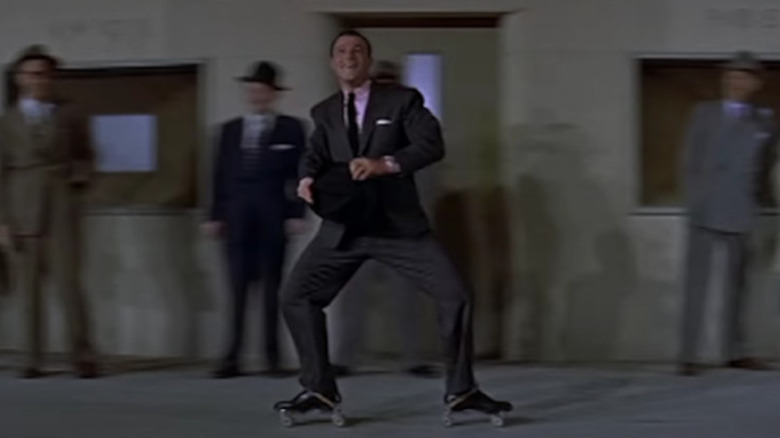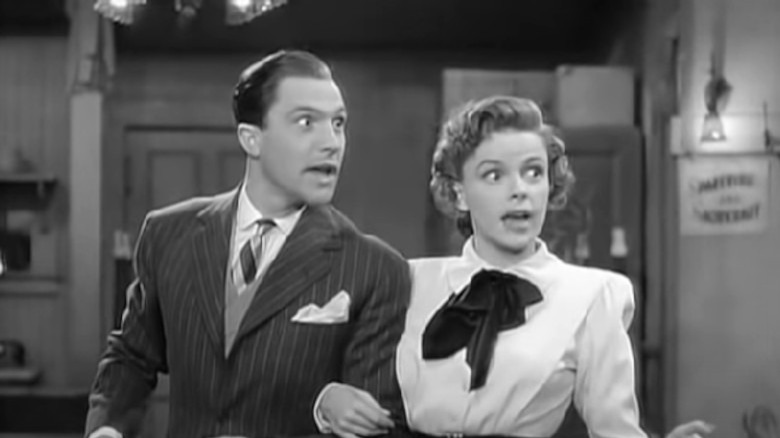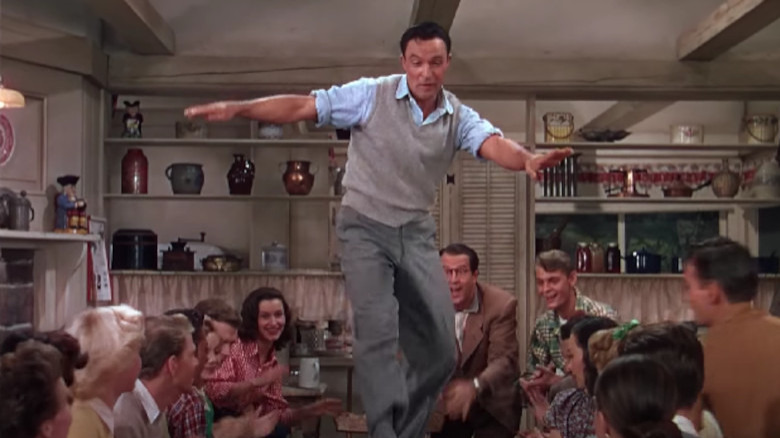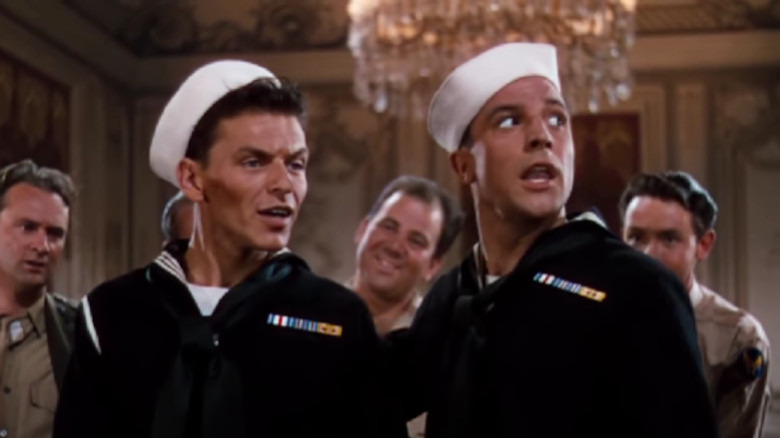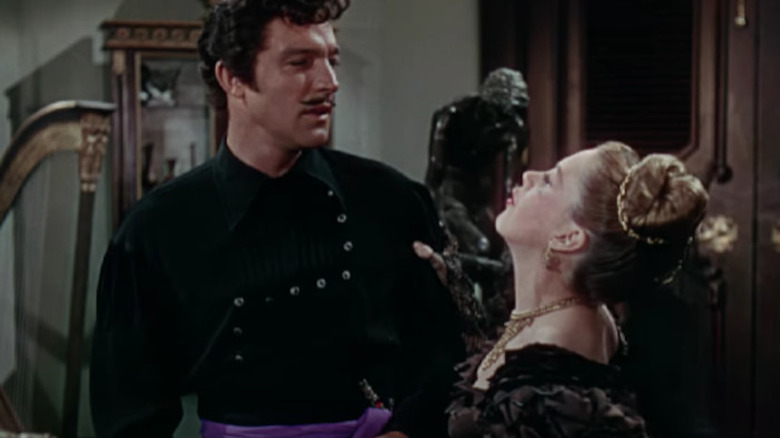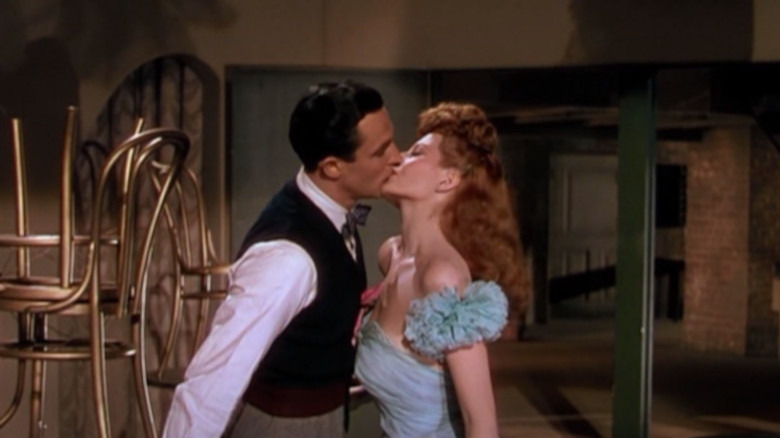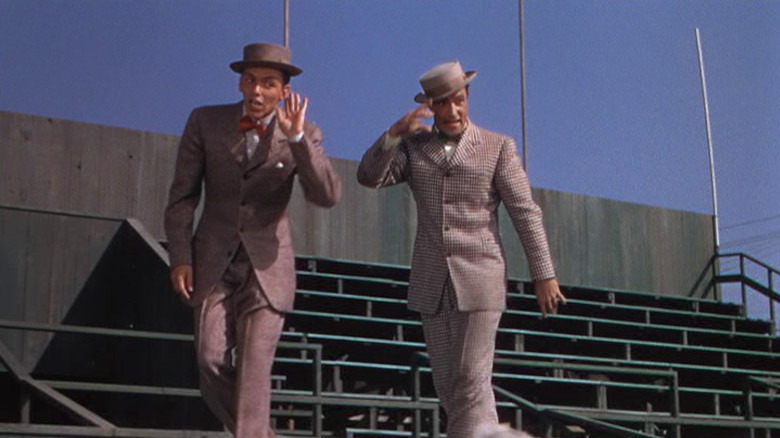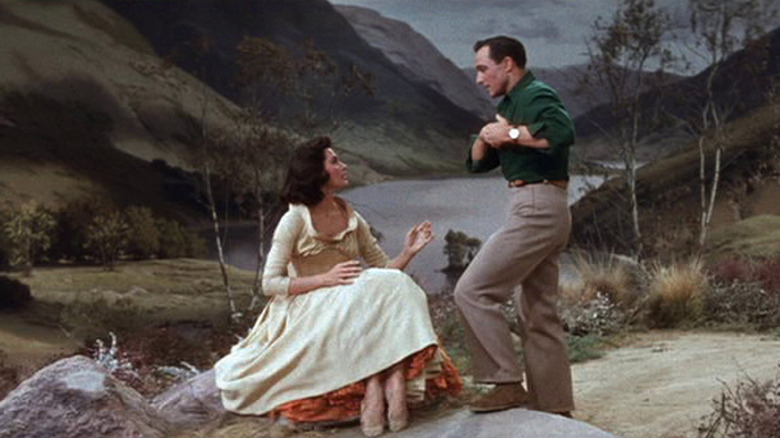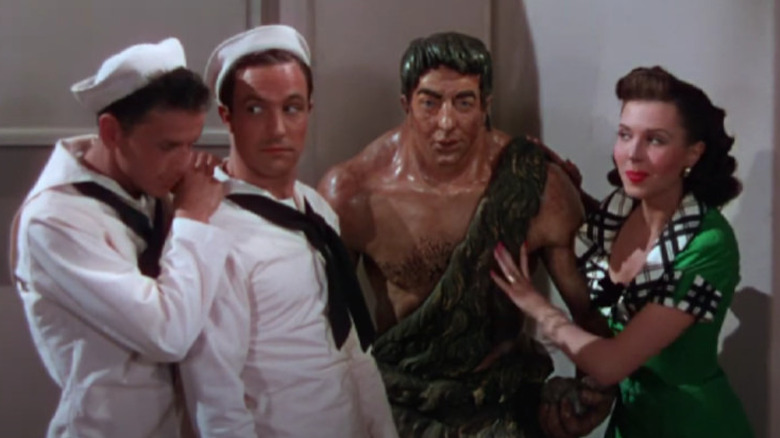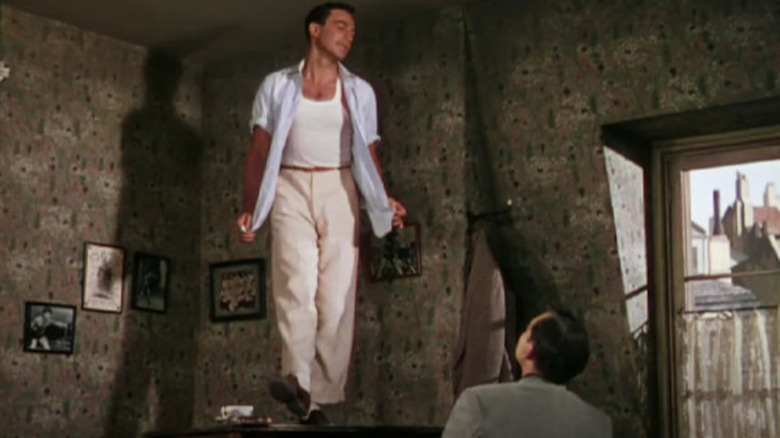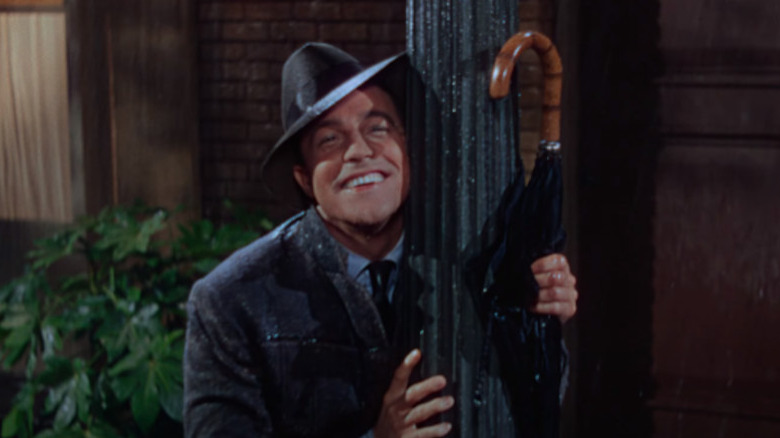25 Greatest Gene Kelly Movies Ranked Worst To Best
The late, great Gene Kelly was undoubtedly one of the best dancers of all time. He not only displayed incredible talent and skill, but he was also a pioneer in the movie industry, changing how dance sequences were filmed. He tried new techniques and advanced filmmaking as a whole throughout his remarkable career. His many dance scenes are among the most memorable of all time, and he helped others rise to their potential time and time again.
Not only are his musicals enjoyable, but his dramatic roles are something to appreciate as well. In his darker dramas, Kelly showed a depth of emotion and acting skill that we don't always see in dancers. He was also a director and choreographer who made the films he worked on better by contributing complicated steps and innovative ideas, such as moving the camera and changing things to be able to film at a lower angle. We lost a true Hollywood icon when he died in 1996 at the age of 83, but one thing's for sure — Gene Kelly will never be forgotten. Let's take a look at his best films that encompass his skills.
25. Pilot #5
Gene Kelly's third feature and his first non-musical, "Pilot #5" is an interesting film, despite failing to use his dancing skills. It takes place in 1942 in Indonesia with an Allied base being bombed by a Japanese aircraft. With another attack expected, five American pilots volunteer to take the one remaining fighter to destroy the Japanese craft and avoid another attack. When George (Franchot Tone) is chosen, the remaining pilots spend time reflecting on George and what he means to them.
The film takes us on a journey, starting years earlier when George is working his way through law school. We soon meet his friend Vito (Gene Kelly), who invites him to join his law firm, and drama ensues. Peter Lawford and Ava Gardner appear in supporting roles. This WWII flick from 1943 was not received well at the time, but it is an intriguing addition to Kelly's film career.
24. The Cross of Lorraine
The same year as "Pilot #5," Gene Kelly appeared in another WWII film called "The Cross of Lorraine." This time the film revolves around a group of French prisoners of war who escape from a German prison camp and join up with the French Resistance. Kelly plays Victor, one of the tortured prisoners, and we see Peter Lorre as a Nazi.
The story is partially based on a novel from 1941 named "A Thousand Shall Fall." Kelly's performance in this gritty drama is a departure from his usual musicals, but that just makes you appreciate him more as an actor. He shows a range here that you don't see in many of his other films. Victor is a hothead, but one with gumption. Lorre also delivers a stellar performance with layers of darkness that will give you even more appreciation for him.
23. The Devil Makes Three
Gene Kelly plays an American pilot in 1952's "The Devil Makes Three," which is set in 1947. It's another WWII drama, but the difference with this one is that we have an underlying love story. Air Corps Captain Jeff Elliot (Kelly) returns to Germany after WWII to thank the family that hid him to save his life during the war. When he shows up, he locates the (now) adult daughter of the family (Pier Angeli), who he begins to date. The problem is she is entangled with a Neo-Nazi group.
A wartime movie with a lot of heart and complications, this non-musical is a must-see for Kelly fans. The addition of Angeli is also a treat, especially given the short career she had — the Italian died of an apparent accidental overdose at the age of 39. This gripping movie has an authentic feel to it, having been shot entirely on location in Austria and Germany.
22. The Three Musketeers
In another dramatic role, Gene Kelly plays D'Artagnan in 1948's "The Three Musketeers." The story follows D'Artagnan, who ventures to Paris to join the royal guard. During this time, he falls in love with a woman named Constance (June Allyson). He soon runs into the other musketeers and manages to provoke each into a duel. When they are all attacked by the royal guard and fight together, they become friends and comrades. D'Artagnan joins the musketeers to battle the dastardly Richelieu, who is trying to usurp King Louis XIII.
Writing in the Santa Cruz Sentinel at the time, film critic Bob Thomas praised "The Three Musketeers" in a short but glowing review. "A big cast, brilliant color and lots of action have been combined for entertaining results," he said. "Gene Kelly is agile, Lana Turner evil, June Allyson sweet, Angela Lansbury regal." This film is a welcome interpretation of a classic story that shows off Kelly's athleticism and swordplay, if not his dancing.
21. Christmas Holiday
At first glance, "Christmas Holiday" appears full of odd casting choices. For a singer and a dancer to be placed in a film noir seems like a weird choice, but that's exactly what we have here. Operatic singer Deanna Durbin plays Jackie, whose husband Robert (Gene Kelly) gets arrested for the murder of a bookie. She sparks the interest of Charles (Dean Harens), who was recently dumped by his girlfriend. He falls in love with her, and they attend midnight mass together. She begins to tell him the story of her life and how her husband was arrested only six months into their marriage. The story is told mainly through flashbacks.
Durbin does get to tap into her singing talent with a few songs, but Kelly has no dance numbers — which makes sense since he is playing a villain. The role is all serious, and he does this well, coming across as quite the disturbing character at times. This film (which was based on a novel by W. Somerset Maugham) allows Kelly to flex his acting muscles and it's a rewarding watch for fans of the actor.
20. Xanadu
In a rather strange pairing, Gene Kelly stars opposite Olivia Newton-John in "Xanadu." While the premise is a bit silly, this is a fun movie to watch to see an older Kelly still able to hold his own. The movie features Newton-John as Kira, a Greek muse who inspires a struggling artist named Sonny Malone (Michael Beck). When he sees her in the background of one of his assignments, he is inspired to find her. When he does, he learns her true identity — Terpsichore, the goddess of dance and chorus. She then prompts him to collaborate with Danny McGuire (Kelly) to build a roller-skating disco, because, why not? It's 1980, after all.
One of the most interesting things about this film is that the name of Kelly's character is the same as his character in 1944's "Cover Girl." Supposedly, they are intended to be the same character 36 years apart. The problem with this is that we know after "Cover Girl" that Danny only has eyes for Rusty, so this connection falls a bit flat. Regardless, this is an interesting film, and it is fun to see Kelly moving so well on roller skates at almost 70 years old.
19. Thousands Cheer
"Thousands Cheer" was released in 1943, one of the earlier entries in Gene Kelly's career. He plays a trapeze artist named Eddie, who enters the army and becomes acquainted with a colonel's daughter, played by Kathryn Grayson. Their romance grows, but the colonel disapproves. There is an army variety show which gives the film the opportunity to feature multiple MGM stars of the day.
The show within the film gives the studio the chance to showcase additional performers in specialty comedic sketches, songs, and dances. The ones who appeared include Judy Garland, Eleanor Powell, Red Skelton, Ann Sothern, Lucille Ball, Lena Horne, and Virginia O'Brien. Kelly only has one dance number — to the tune "Let Me Call You Sweetheart," where he dances with a mop all over the room. Although he received no choreography credit, it is obvious that his signature style is all over this number.
18. Living in a Big Way
1947's "Living in a Big Way" was the first film that Gene Kelly did following his discharge from the Navy. Much like his character, he is just returning home after the war. In this classic rom-com, Leo (Kelly) comes home to find that his wife (under the influence of her father) wants a divorce. It was a whirlwind romance before he was gone for three years. His wife, played by Marie McDonald, is not what she led him to believe and expects him to divorce her quickly, but he has other plans.
This film is endearing as you see Kelly not only interact with children, but even dance with a dog in the number "Fido and Me." Another stellar highlight is when he uses a construction site as a dance platform to showcase his strength and climbing abilities. "Living in a Big Way" touches upon the themes of class divides and the treatment of veterans while still managing to be funny and heartwarming.
17. Black Hand
In another film noir role, Gene Kelly plays Johnny in "Black Hand," a man set on avenging the murder of his father. He returns to New York from Italy to find this man and make him pay. He gets distracted from his mission by a childhood friend named Isabella (Teresa Celli), and also meets a police detective named Louis (J. Carrol Naish). Both of them try to convince him that this isn't the way to go about setting things right.
Kelly was right in the middle of making some of his greatest musicals when he made "Black Hand" in 1950, a big detour for the dancer. This gritty film is worth watching to check out Kelly in a dark role that massively contrasts with these musicals. We also get to learn about the crime organization that the film is named after. The Black Hand was a real extortion ring that operated in the early 1900s.
16. Marjorie Morningstar
1958's "Marjorie Morningstar" has an interesting pairing in Gene Kelly and Natalie Wood. The story follows Marjorie (Wood), a college student who falls in love with an older man named Noel (Kelly), a director. Although her parents want her to marry someone with more prospects, she decides to follow her heart and pursue a relationship with Noel, who they don't approve of. Noel runs away following the failure of his musical, but Marjorie tracks him down.
This film is another departure from Kelly's musical roles. It was based on Herman Wouk's novel and was Wood's first starring role on the silver screen. She also plays the first onscreen Jewish main character in over 30 years. Kelly does have one dance number in this film, performing with Patricia Denise, who was a ballet dancer and teacher. Seeing Kelly dance is always a treat, and with such a talented partner, this one is not to be missed.
15. Les Girls
Gene Kelly is surrounded by beauties in the 1957 film "Les Girls," which revolves around three former roommates who end up in a lawsuit. When Sybil (Kay Kendall) writes a memoir about her time dancing with the Les Girls Company, she reveals some secrets that Joy (Mitzi Gaynor) and Angèle (Taina Elg) would rather were kept under wraps. Namely, that Angèle had an affair with the proprietor Barry (Kelly) and attempted suicide when he left her. This leads to a lawsuit in which Barry must come to court and tell his side of the story.
While the subject matter of this film sounds a bit heavy, it's a musical with some fun numbers — Kelly dancing with Gaynor is the highlight. It is also a noteworthy movie because it was Kelly's last musical that he starred in under his contract with MGM. "Les Girls" is also the last movie that Cole Porter was involved in, and it features some of his great songs like "You're Just Too Too!" and "Why Am I So Gone (About That Gal)?"
If you or anyone you know is having suicidal thoughts, please call the National Suicide Prevention Lifeline at 1-800-273-TALK (8255).
14. Invitation to the Dance
Directed by Gene Kelly, 1956's "Invitation to the Dance” is a testament to his ability to tell a story through dance alone. While he does this through numbers in other films, this is the only piece where there is no dialogue. "Invitation to the Dance” is set up as three different stories told through the art of movement. "Circus" features Kelly as a clown involved in a love triangle with a ballerina (Claire Sombert) and a tightrope walker (Igor Youskevitch). For the second segment, "Ring Around the Rosy," Kelly dances with Tamara Toumanova. The third sequence is "Sinbad the Sailor," in which Kelly dances with animated palace guards, and also Carol Haney.
This unique film is a showcase of Kelly's unmatched skills, proving how accomplished he was in a number of different styles. Each segment stands on its own, with the only thread connecting them being Kelly's choreography and direction.
13. Inherit the Wind
Even though Gene Kelly initially turned down his role as E.K. Hornbeck in "Inherit the Wind," it is a good thing that he reconsidered because this is a poignant movie. It is a fictionalized account of the "Monkey Trial" that happened in 1925 between two lawyers (Spencer Tracy and Fredric March), who debated evolutionism vs creationism. While the film and actual trial have similarities, they are different in that the characters are more like caricatures of themselves because their traits are exaggerated.
Kelly based his decision to participate in this film on director Stanley Kramer telling him that Tracy and March were going to be his co-stars. The truth was that Kelly was confirmed first, and although Kramer used Tracy and March as a selling point, they hadn't even been offered the parts yet. Kelly plays a newspaper reporter covering the trial. This film is an interesting look at a debate that still rages on in the world today.
12. Du Barry was a Lady
1943's "Du Barry was a Lady" is Gene Kelly's second film. It's also Lucille Ball's first starring role under her MGM contract, and she plays off both Kelly and Red Skelton well here. May Daly (Ball) is in love with dancer Alec (Kelly), who wants to marry her for her money. Louis (Skelton), the hat check man, is in love with her and asks her to marry him after he wins some money. She agrees even though she doesn't love him. Some fun costumes come into play when Louis gets knocked out and dreams that he is King Louis XV and in pursuit of Madame Du Barry.
While Kelly's role is smaller here, he does have a song and dance number that stands out in "Do I Love You?" The movie is funny and a good one to check out for something different early on in Kelly's career. You also get to see Virginia O'Brien perform the stellar number "Salome" in a signature deadpan style that no one else can do.
11. It's Always Fair Weather
The film "It's Always Fair Weather" was a bit of a box office disappointment because it came out in 1955 when the big song-and-dance Hollywood musicals were on the way out of favor. It was also the last collaboration between Stanley Donen and Gene Kelly, who had worked well together for many years. The film features three army buddies, who go their separate ways after the war. Before they do so, they agree to meet at the same bar in ten years. When they all show up, they realize how much has changed in that time and struggle to make a connection.
The film was originally to be a sequel to "On the Town" and a reunion for Kelly, Frank Sinatra, and Jules Munshin. The story was later changed because Sinatra was not available, and Dan Dailey and Michael Kidd were added to the cast. This movie is also the final collaboration between Kelly and Cyd Charisse. The highlights are Kelly dancing on roller skates and Charisse dancing to "Baby, You Knock Me Out."
10. For Me and My Gal
"For Me and My Gal" was Gene Kelly's debut film and Judy Garland's first adult role, so it was a big deal for both of them. Garland helped show Kelly the ins and outs of filmmaking in this movie, which has him playing a character similar to the title role he played on Broadway in "Pal Joey." The storyline follows a newly formed vaudeville partnership between Jo (Garland) and Harry (Kelly), who are just starting to have success when Harry is drafted during WWI. Instead of fulfilling his duty, Harry crushes his hand in a suitcase, making him exempt from being drafted. Jo is distraught when she figures it out, and the two separate before finding their way back to each other after Harry's redemption arc.
This film features great duets from Garland and Kelly, including the title song. They already have such chemistry and are fun to watch. Garland helped him get his start in this film, and Kelly remained devoted to her throughout her career. "I learned a great deal about making movies doing this first one, and much of it was due to Judy," he said. "She was a very relaxed, marvelous person — the most talented performer we've ever had."
9. Summer Stock
The final pairing of Gene Kelly and Judy Garland came in 1950's "Summer Stock," and was also her last film for MGM before she parted ways with the studio. Originally intended to be a reunion of her films with Mickey Rooney, "Summer Stock" is the story of Jane (Garland), who is the owner of a struggling farm. When her deadbeat sister (Gloria DeHaven) and her theatrical friends show up to put on a show in her barn, she is at first extremely annoyed before she figures out she can put them to work in exchange for letting them do their show. Despite being engaged to a local (Eddie Bracken), she instead falls for her sister's boyfriend Joe (Kelly).
The reason that Rooney didn't reunite with her here is that he was no longer a box office draw like Kelly was by this point. Kelly probably would not have accepted the part except for his loyalty to Garland, who had been his champion during his film debut. When asked about it later, he said, "We loved her, and we understood what she was going through, and I had every reason to be grateful for all the help she had given me." After the failure of "Annie Get Your Gun" she was shaky and Kelly helped to steady her.
8. Anchors Aweigh
"Anchors Aweigh" was the first pairing of Frank Sinatra and Gene Kelly. The film follows two Navy men who are granted a three-day leave in Los Angeles, where Joe (Kelly) schools Clarence (Sinatra) on the ways of wooing women. They run into a small boy (Dean Stockwell) and return him to his Aunt Susie (Kathryn Grayson). While Clarence takes an interest in her, she falls for Joe, but things get complicated when the audition they promised her turns out to be fake.
This film was the first time a cartoon and a human danced together. Kelly dances impressively with Jerry the Mouse, which is a definite highlight. The dynamic between Sinatra and Kelly also serves the film well, and their chemistry is evident from this first pairing. You can tell that Sinatra is still unsure about his dancing as he watches Kelly's feet during the "I Begged Her" number, but as you watch them in later films, his confidence clearly increases.
7. The Pirate
As Gene Kelly and Judy Garland's second film, sandwiched between "For Me and My Gal" and "Summer Stock," "The Pirate" is often overlooked. It centers around Manuela (Garland) and a circus leader named Serafin (Kelly). When Serafin encounters Manuela in Port Sebastian, he has an epiphany and is suddenly no longer a womanizer. When he learns she is engaged, he hypnotizes her during his show to uncover more about her true desires. He discovers that she has an admiration for the famous pirate Macoco and that her real fiancé Don Pedro (Walter Slezak) is the pirate in disguise. He pretends to be the pirate, but things backfire when the real Macoco turns him in to hang for his crimes.
Although Garland had difficulties filming, missing 99 out of the 135 shooting days, the chemistry between her and Kelly shines through. In addition to the love story, we have the beautiful and colorful sets that director Vincente Minnelli is known for, and a new invention by Kelly to improve shooting. He helped design a device that allowed the Technicolor cameras — which were quite bulky at the time — shoot from low angles to get the effect he wanted during his dance sequences, especially the pirate ballet.
6. Cover Girl
"Cover Girl" is credited with helping to establish the careers of both Gene Kelly and Rita Hayworth. Released in 1944, it revolves around Rusty (Hayworth) and Danny (Kelly). Although Rusty is a dancer at Danny's nightclub, she longs to be a star, so she tries out to be the next cover girl. When she gets the spot on the magazine, other men pursue her, and she becomes an overnight success, much to Danny's distress.
Kelly was also given a ton of creative control for the first time in his career, and his ideas are why this movie was so successful. The number "Make Way for Tomorrow" that features him, Hayworth, and Phil Silvers dancing along an entire street was his idea. He took out multiple sound stage walls so they could complete this in one take. Kelly also conceptualized the alter ego dance number where he dances with himself by using trick photography.
5. Take Me Out to the Ball Game
"Take Me Out to the Ball Game" is the second pairing of Gene Kelly and Frank Sinatra. Originally, the female lead was to be Judy Garland instead of Esther Williams, who plays K.C. Higgins. The film revolves around Higgins as she takes over the ownership of a baseball team, which Eddie (Kelly), Denny (Sinatra), and Nat (Jules Munshin) all play on. They are not happy with the ownership changing hands, but soon Denny and Eddie both fall in love with her. Things are complicated when a gambler (Edward Arnold) sets out to sabotage their path to win the pennant.
The idea was conceived by Kelly, who originally wanted to play shortstop for the Pittsburgh Pirates growing up. "I'd planned on throwing nothing but strikes," he once said, but he hurt his arm and had to shift his dreams to something else — dance! Making a baseball movie must have been a fun way for him to pay tribute to his past dreams and to baseball as a whole. This film is an enjoyable watch, and even includes an obligatory swimming scene from Williams.
4. Brigadoon
Cyd Charisse's favorite movie with Gene Kelly, "Brigadoon" originated on Broadway before being brought to the silver screen in 1954. This film is the story of two American hunters, Tommy (Kelly) and Jeff (Van Johnson), who are on holiday in Scotland when they come across the small town of Brigadoon. The people there speak strangely and run away from the strangers as they prepare for a local wedding. Tommy falls in love with one of the locals named Fiona (Charisse) but soon learns that the town is frozen in time and being with her means giving up everything else.
Both Kelly and director Vincente Minnelli were disappointed that the studio didn't have the budget to film on location, and this contributes to the stage feel of the film. Despite that, the performances and dancing of the leads is nothing short of mesmerizing and the mystery of the town pulls you in. This is classic Gene Kelly and a must-see for fans of the Hollywood icon.
3. On the Town
Gene Kelly and Frank Sinatra's third and final pairing is also their best. "On the Town" follows three sailors (Kelly, Sinatra, and Jules Munshin) on a one-day leave. When Gabe (Kelly) sees a picture of a beautiful girl (Vera-Ellen) on the subway, he decides he needs to find her. He drags along his reluctant buddies and soon they all find girls to swoon over, but they just have one night together before they must be back on the ship.
The opening sequence — which took five days to film — was a big deal because it was filmed on location in New York. The shoot was fraught with problems because of the rainy weather and Sinatra's popularity. To avoid crowds, the cast used taxis in place of limousines. Kelly, who shared directing responsibilities with Stanley Donen, held this film in high regard. "We made better pictures than that, but that was the apex of our talent," he once said. "I think [it was] maybe my biggest contribution to the film musical."
2. An American in Paris
"An American in Paris" combines the directing talents of Vincente Minnelli with Gene Kelly's great choreography. It's a film about a struggling painter (Kelly) living in the French capital. He meets a wealthy benefactor (Nina Foch), who agrees to help him with his career, but he soon learns she is interested in a romance with him as well. In the meantime, he has fallen for a woman named Lise (Leslie Caron), who is engaged to a new acquaintance of his named Henri (Georges Guétary).
"An American in Paris" was a huge success at the time. It was nominated for eight Academy Awards, of which it won six, including best picture. Kelly is at his best here, and picking Caron was a clever idea given her ballet skills. Even though Minnelli was the official director, Kelly often took over these duties while Minnelli was dealing with his divorce proceedings with Judy Garland. This film is packed with great dancing and singalongs with colorful costumes and sets to delight your eyes. It captures the magic of Paris, and Kelly is just as magical.
1. Singin' in the Rain
Don Lockwood is the part that Gene Kelly was born to play. "Singin' in the Rain" is an iconic film that follows Don as he and his co-workers attempt to navigate the transition from silent films to talkies. The problem is his leading lady Lina Lamont (Jean Hagen) has an awful, screechy voice, which does not translate well to sound. While Lina fancies Don, he falls in love with Kathy (Debbie Reynolds), who agrees to record Lina's dialogue and singing for her. Ever the perfectionist, Kelly worked hard to make sure everything was just right. He even danced the title song with a fever and completed 40 takes of the final piece of "Good Morning" with Reynolds, whose feet were bleeding by the end of the day.
Despite the hardships the cast experienced, they produced a movie with stellar dancing, an intriguing love story, and great music. According to Peter Bradshaw of The Guardian, "The songs themselves often float surreally free of the story, or subtextually provide the joins. In 'Good Morning' (celebrating their all-night conversation in which the genre of movie musical has been invented), Kathy, Cosmo and Don prophetically pick up rain macs, anticipating the legendary number to come." It is Kelly's masterpiece and often considered the greatest musical ever made.
